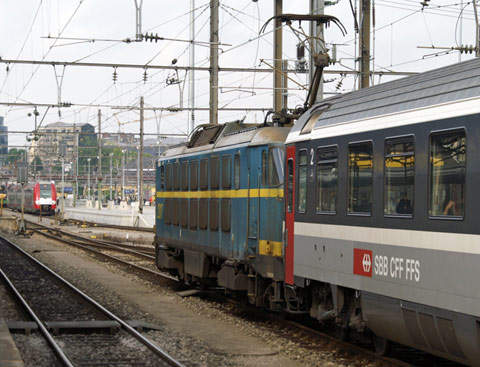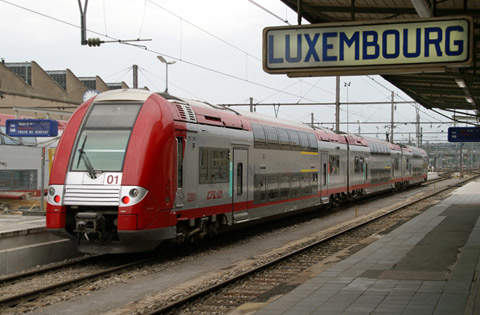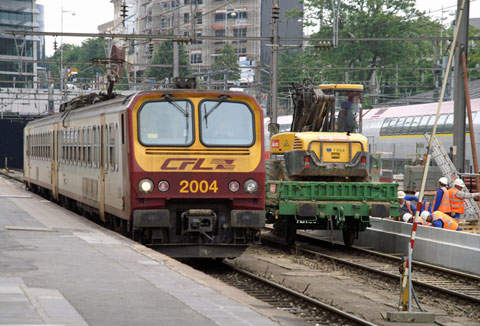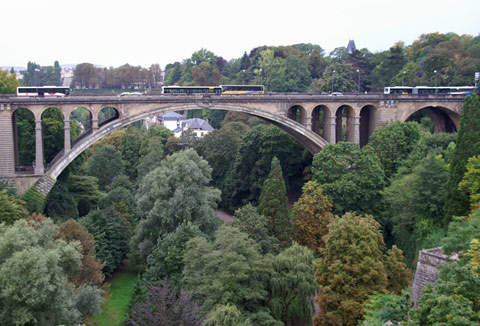Although it is a relatively small country, the prosperous Grand Duchy of Luxembourg is a crossroads for many main railway routes criss-crossing Western Europe.
Surrounded by France, Germany and Belgium, Luxembourg handles trains of operators from these three major countries, as well its own state-owned Société Nationale des Chemins de Fer Luxembourgeois (CfL). Capital Luxembourg (City) and its main station (known variously as Gare Centrale or Luxembourg-Ville, but signed simply as Luxembourg) is the hub of the national network as well as for international services such as long-distance Brussels-Basel or local commuter traffic along the line to Metz in France.
Official commitment to long-term rail development was illustrated by Luxembourg’s financial contribution to France’s LGV Est project – Luxembourg is now a terminus for Paris TGV services – and the large-scale renewal of locomotive and passenger rolling stock in recent years.
The project
In spite of Luxembourg’s generally rural hilly and wooded terrain, its rail network was shaped by the now-fading mining and steel industries close to the French border to the south. In recent years, however, work opportunities have shifted towards the capital.
An overall objective of the government’s ‘Mobil 2020’ plan is to more than double (to 25% from a 2002 base year) the use of public transport, including rail, bus and (as yet non-existent) light rail.
Aims are in part based on completing a range of projects for new lines to establish new transport axes (‘les nouveaux pôles’) better suited to serve demand. In October 2008 the government announced a €1bn plan under Mobil 2020 for two new lines and rebuilt stations in the south. Allowing access to more areas, the lines will reduce the heavy loads currently handled by the Bettembourg-Thionville (France) route, part of a main European rail freight corridor.
Although they are all connected to Luxembourg City/Gare Centrale, these lines will help establishing the ‘gares périphériques’ of (to the north) Kirchberg and (south) Howald and Cessange.
Best known as a major air freight hub, Luxembourg Findel Airport’s rebuilding programme includes a station in Terminal 1 over a new 8.4km (5.3 mile) rail link with connections in both directions from the Luxembourg City-Wasserbillig (Luxembourg) and Trier (Germany) line. As well as tapping into air-based markets, the line will serve the established Luxexpo exhibition centre by 2016.
Infrastructure
Apart from the 3,000V dc line into Luxembourg City, an extension of the Belgian main line electrification from the border near Arlon, the 270km (169 mile) CfL network is largely electrified at 25kV ac. Compatibility with its neighbours is achieved with multi-voltage stock, a policy commonplace in Luxembourg long before it was promoted by the European Community.
Gare Centrale is undergoing a long-term rebuilding programme, which began in 2006. It will preserve the original architectural features that dominate the southern ‘Quartier Gare’ area of the city.
Rolling stock
Train movements in Luxembourg are mostly handled by national operator CfL, with Germany’s DB, France’s SNCF and Belgian SNCB-NMBS also present. The mainstay domestic passenger locomotives likely to be used on the new lines are the Alstom/Bombardier Class 3000 (from 1998) and 20 Bombardier Class 4000 TRAXX (2004), working in push-pull mode with Bombardier double-deck passenger stock (2004).
These dual-voltage locomotives – respectively also covering Belgian and German systems – also work international freights. The 22 Alsthom Class 2000 EMUs (1990) are the oldest stock, with 12 Class 2200 double-deck EMUs in a pool with the near identical SNCF TER-2N, with more on order. Specifications for light rail stock are awaited.
The future
Luxembourg City rests between several steep valleys, and high-level bridges limit traffic capacity. This is an issue that calls for high-capacity trams as a more efficient mode (and substantially quieter) than cars and buses. A ‘Tram Leger’ scheme has existed for several years, the traditional tram system having closed by 1964.
In March 2009, LUXTRAM, formed by the city and national authorities, announced that UK-based Lifschutz Davidson Sandilands in co-operation with Luxembourg’s integrated Place company had won the design contract. The initial line from Luxexpo (where it will have an interchange with the new airport line) to Gare de Luxembourg via the EC quarter and the city centre is expected to open by 2014.
As is commonplace in 21st century French tramways, the project will involve substantial reworking of urban space and traffic flows. In May 2008, the initial 13-stop line was forecast to cost €150m.
The long-term aim is for the light rail connection to extend south, incorporating the new heavy rail focal points of Howald and Cessange. Although project detailing is to be completed, a five-minute frequency is projected to give a five-fold capacity increase over buses working similar schedules to 6,500 hourly.







